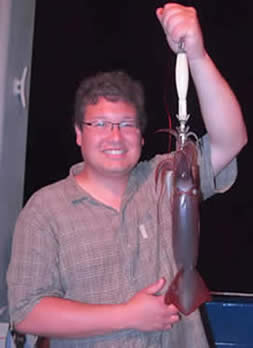Dr. Theodore Uyeno
 Contact Information
Contact Information
Lab webpage: https://blog.valdosta.edu/uyeno/
E-Mail: tauyeno@valdosta.edu
Education & Experience:
B.Sc. Biological Sciences, University of Calgary, Alberta, Canada
M.Sc. Zoology, University of Calgary, Alberta, Canada
Ph.D. Biomechanics, University of North Carolina at Chapel Hill
Post-Doctoral Fellow & Adjunct Professor, Neurobiomechanics, Northern Arizona University
MBL Summer course, Neural Systems & Behavior, Woods Hole, MA
Teaching:
- Biol 1100 Freshman Seminar
- Biol 2251/2252 Anatomy & Physiology I & II
- Biol 3800/5800 Invertebrate Zoology
- Biol 6530 Comparative Biomechanics
- Biol 7300 Topics in Physiology
The primary question that drives the research performed in the Uyeno Lab is: How does it work? The field of biomechanics is therefore a wonderfully integrative science that is part basic biology, part physics, part computer science and part mechanical and electrical engineering. My research characterizes the functional morphology and evolution of living mechanisms. As such, I choose to primarily work with invertebrates (especially snails and squids!) because of their vast diversity of extremely understudied morphologies. I am particularly interested in studying deformable soft tissue structures that are capable of complex and diverse movements. My current research focuses on the form, function, and control of "muscle articulations". These are extremely flexible joint structures that are formed of muscle and connective tissues, the range of motion of which may be limited not by morphology, but by neural control!).
I employ a number of methods in my research program. I use a variety of histological, microscopical, and medical imaging techniques to describe anatomical structures. In order to test functional theories, I often use direct methods, such as digitally recording force vs. extension relationships and activation patterns of nerves and muscles. I also perform indirect experiments that include the use of models based on anatomy. These models can be either three-dimensional computer simulations or actual physical models that I develop using computer-aided design software and fabricate in my lab.
Lab Members:
I am interested in training enthusiastic and engaged undergraduate and graduate students interested in Biomechanics research. I encourage my students to pursue independent research projects. My students tend to design not only their own projects, but also their own experimental rigs and protocols. If you are interested in joining my lab, please send me an email or arrange an appointment with me to see the lab!
Publications:
A list of selected publications can be found at my lab web page.
Extracurricular Activities:
Mentoring the VSU Amateur radio club, Beekeeping, silver/blacksmithing, archery, sailing, tinkering with inventions, and long nature walks.
Department of Biology
-
Room 2035, 2nd Floor
Bailey Science Building -
Mailing Address
1500 N. Patterson St.
Valdosta, GA 31698 - VSU - Department of Biology
- Phone: 229.333.5759
- Department of Biology Fax
- Fax: 229.245.6585
Monday - Friday
8:00 AM - 5:00 PMSaturday - Sunday
CLOSED